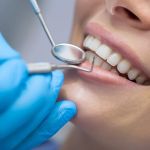How to Teach Children Oral Hygiene: A Complete Guide for Parents
Teaching children about oral hygiene is one of the most important lessons they can learn. Not only does it help prevent cavities and gum disease, but it also instills healthy habits that can last a lifetime. As a parent, guiding your child through the process of learning to care for their teeth can be challenging, but it’s a rewarding journey that sets the foundation for good dental health. In this article, I’ll share tips and strategies on how to teach children proper oral hygiene, making it fun and effective for both parents and kids.
1. Start Early: Establish Good Habits from the Start
When it comes to teaching children about oral hygiene, the earlier you start, the better. Pediatric dentists recommend beginning oral care even before your baby’s first tooth emerges. Gently wiping your baby’s gums with a soft, damp cloth can help prevent the buildup of bacteria. Once their first tooth appears, it’s time to introduce a baby toothbrush and toothpaste designed specifically for infants.
By starting early, you’re not only preventing future oral health problems, but you're also getting your child used to the idea of brushing their teeth. Early habits are often the foundation for lifelong oral hygiene practices, so setting the right tone from the very beginning can make a big difference in the long run.
2. Make Brushing Fun and Interactive
Children often resist brushing their teeth because they see it as a chore. To make oral hygiene fun and engaging, turn it into a game or make it interactive. There are plenty of ways to do this, such as:
- Use fun toothbrushes: Let your child pick a toothbrush with their favorite cartoon character or one that changes color when wet.
- Sing songs: There are many catchy songs that help kids brush for the right amount of time, usually around two minutes. Singing a familiar tune can make brushing feel like playtime.
- Use a brushing timer: Set a timer for two minutes, and watch the clock together to make it feel like a fun countdown.
- Use flavored toothpaste: Let your child pick a toothpaste flavor they enjoy, so brushing becomes a treat.
Making the experience fun and exciting will encourage your child to look forward to brushing rather than seeing it as a tedious task.
3. Lead by Example: Show Your Child How It's Done
Children learn best by example. One of the most effective ways to teach your child good oral hygiene habits is by practicing what you preach. Brushing your teeth in front of them and showing them that you take care of your own teeth sets a great example. Children are more likely to imitate their parents, so being a role model is key to encouraging them to maintain good habits.
Additionally, explaining why brushing and flossing are important can help your child understand the benefits. Talk to them about how brushing helps keep their teeth clean and strong, preventing cavities and painful trips to the dentist. The more they understand the “why,” the more motivated they’ll be to follow your example.
4. Encourage Flossing as They Get Older
Once your child is old enough to handle the task, usually around age 5 or 6, it’s important to introduce flossing into their routine. Flossing helps remove food particles and plaque from between the teeth where a toothbrush can’t reach. Teaching children to floss early on will set them up for better long-term oral health and reduce their risk of gum disease and cavities.
To make flossing easier for younger children, you can use floss picks designed for kids. These picks are easier to handle than traditional floss and make the process less intimidating. Start with just one or two teeth and gradually work up to flossing all their teeth. As your child gets older, they’ll be able to floss on their own with minimal supervision.
5. Make Regular Dental Visits Part of the Routine
Regular dental check-ups are an important part of your child’s oral health care routine. Pediatric dentists recommend that children see the dentist by their first birthday or within six months of their first tooth. These early visits help ensure that your child’s teeth are developing properly and that any potential issues are caught early.
Dental visits also help your child get used to the dentist’s office and understand that it’s a positive experience. Avoid using the dentist as a threat (“If you don’t brush your teeth, the dentist will be angry!”) as this can create unnecessary fear. Instead, explain that regular visits help keep their smile bright and healthy.
6. Reinforce Positive Behavior and Celebrate Success
Positive reinforcement goes a long way in encouraging kids to continue with good habits. Celebrate your child’s efforts by praising them for brushing and flossing on their own. You can even create a reward system where they earn stickers or small prizes for brushing without a fuss. This can help create a sense of accomplishment and make them feel proud of taking care of their teeth.
It’s also important to reinforce that oral hygiene is a part of their daily routine, just like eating, sleeping, and playing. By making oral hygiene a consistent and positive part of their day, you’re helping them establish a routine that will stick with them for life.
7. Addressing Common Challenges: What to Do if Your Child Resists
It’s common for children to resist brushing or be reluctant to visit the dentist. If your child refuses to brush, try to figure out the cause. Are they scared of the toothbrush? Do they dislike the toothpaste flavor? Do they feel they don’t have enough time to brush? Identifying the source of the problem will help you address it more effectively.
For example, if your child is scared of brushing, consider using a soft, child-friendly toothbrush or even letting them watch you brush your teeth to show them it’s not scary. If they don’t like the flavor of toothpaste, let them pick a new flavor or try a gel instead of paste. Making the experience as enjoyable and comfortable as possible can make all the difference.
Overall, the key to teaching children oral hygiene is patience, consistency, and making the process fun. By starting early, leading by example, and encouraging good habits, you can help your child develop a healthy relationship with oral care that will last a lifetime.
OLD Keywords-8:SEO Title: How to Teach Children Oral Hygiene: Tips for ParentsSEO Keywords: teaching children oral hygiene, kids brushing habits, pediatric oral care, child dental health, kids flossingSEO Description: Learn how to effectively teach children proper oral hygiene with easy-to-follow tips, from brushing to flossing. Create positive dental habits that last a lifetime.





 Lakeland Creek Family Dental4.0 (418 review)
Lakeland Creek Family Dental4.0 (418 review) Kalil & Kress Family and Cosmetic Dentistry4.0 (503 review)
Kalil & Kress Family and Cosmetic Dentistry4.0 (503 review) Sierra Family Dentistry4.0 (17 review)
Sierra Family Dentistry4.0 (17 review) Dr. David S. McGee, DMD5.0 (10 review)
Dr. David S. McGee, DMD5.0 (10 review) Hudec Dental4.0 (455 review)
Hudec Dental4.0 (455 review) Dr. Surya Bhavaraju0.0 (0 review)
Dr. Surya Bhavaraju0.0 (0 review) The Importance of Oral Health Education During Pregnancy for a Healthy Pregnancy
The Importance of Oral Health Education During Pregnancy for a Healthy Pregnancy Best Tips for Brushing Your Teeth Properly for Healthy Gums: Essential Techniques for Oral Health
Best Tips for Brushing Your Teeth Properly for Healthy Gums: Essential Techniques for Oral Health Why Skipping Dental Checkups Can Lead to Bigger Oral Health Problems
Why Skipping Dental Checkups Can Lead to Bigger Oral Health Problems Advantages of Porcelain Dental Restorations
Advantages of Porcelain Dental Restorations How Can Diabetes Cause Tooth and Gum Problems? Preventing and Managing Oral Health Issues
How Can Diabetes Cause Tooth and Gum Problems? Preventing and Managing Oral Health Issues Healthy Habits for Promoting Good Oral Health and Hygiene: Tips for a Healthy Smile
Healthy Habits for Promoting Good Oral Health and Hygiene: Tips for a Healthy Smile